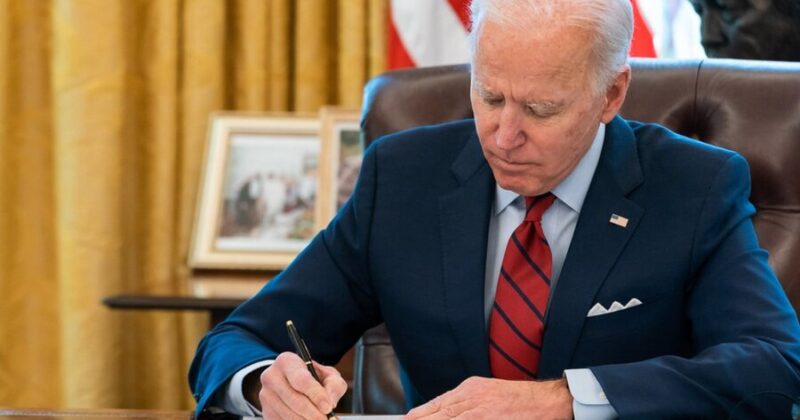The Biden administration has unveiled $4.3 billion in grants aimed at reducing climate pollution. These funds will support climate pollution projects across 30 states and one tribal nation, through the U.S. Environmental Protection Agency (EPA).
According to the July 22 announcement, the grants aim to bring “community-driven solutions that tackle the climate crisis, reduce air pollution, advance environmental justice, and accelerate America’s clean energy transition” through six avenues: transportation, electric power, commercial and residential buildings, industry, agriculture, and waste and materials management.
“When I think of climate change, I think about jobs—good-paying, union jobs that put Americans to work, rebuild our nation’s aging infrastructure, and support our transition to a clean energy future,” President Joe Biden said in a statement.
The administration stated that the grants will finance projects aimed at deploying technologies and programs for reducing “greenhouse gases and other harmful pollution across the country.”
The grants would also help “build the infrastructure, housing, industry, and competitive economy needed for a clean energy future” while supporting businesses in job creation and training programs within “new and growing industries.”
President Biden said the grants will help reduce greenhouse gas emissions in Pennsylvania and provide flood-proofing infrastructure in North Carolina.
John Podesta, senior adviser to the president on international climate policy, stated that the grants “put local governments in the driver’s seat to develop climate solutions that work for their communities.”
“These grants will help state and local governments improve the air quality and health of their communities while accelerating America’s progress toward our climate goals,” he said in a statement.
Pennsylvania’s Department of Environmental Protection will receive over $396 million to support a project aimed at reducing industrial emissions and funding large-scale decarbonization initiatives throughout the state.
“This investment will help us reduce toxic air pollution, create thousands of jobs, invest in our energy sector, and continue Pennsylvania’s legacy of energy leadership,” Pennsylvania Gov. Josh Shapiro said in a statement.
California’s South Coast Air Quality Management District will receive almost $500 million in transportation incentives for electric-charging equipment and zero-emission freight vehicles.
A nearly $50 million grant will be allocated to the Montana Forest, Community, and Working Landscapes Climate Resiliency Project. This funding will enhance state forest management, expand urban and community forests, and be used to address wildfire and coal seam fire mitigation.
Nebraska’s Department of Environment and Energy will receive more than $300 million to “increase the adoption of climate-smart and precision agriculture” and lessen the agricultural waste from livestock.
A project for electric vehicle-charging infrastructure along the I-95 corridor across New Jersey, Connecticut, Delaware, and Maryland will receive nearly $250 million.
Michigan’s Department of Environment, Great Lakes, and Energy will receive nearly $130 million to offer incentives and technical assistance to local and tribal governments. This funding aims to speed up the siting, zoning, and permitting of renewable energy projects, with the goal of making 60 percent of the state’s energy sources renewable by 2030.
The Atlantic Conservation Coalition, which funds efforts across North Carolina, South Carolina, Maryland, and Virginia, will receive more than $420 million to “leverage the carbon sequestration power of natural and working lands, including coastal wetlands, peatlands, forests, and urban forestry.”
Carbon sequestration is the process of removing carbon dioxide from the atmosphere and storing it in solid or liquid form, either naturally or artificially. Plants, particularly forests, naturally absorb carbon dioxide as they grow and store it in their biomass. Additionally, carbon dioxide can be artificially extracted from the atmosphere, pressurized, and injected into the Earth’s crust.
“These awards will supercharge American climate progress across sectors—from reaching 100 percent clean electricity to slashing super-pollutants like methane to harnessing the power of nature across our farms and forests in the fight against climate change,” White House national climate adviser Ali Zaidi said in a statement.
Share your thoughts by scrolling down to leave a comment.

